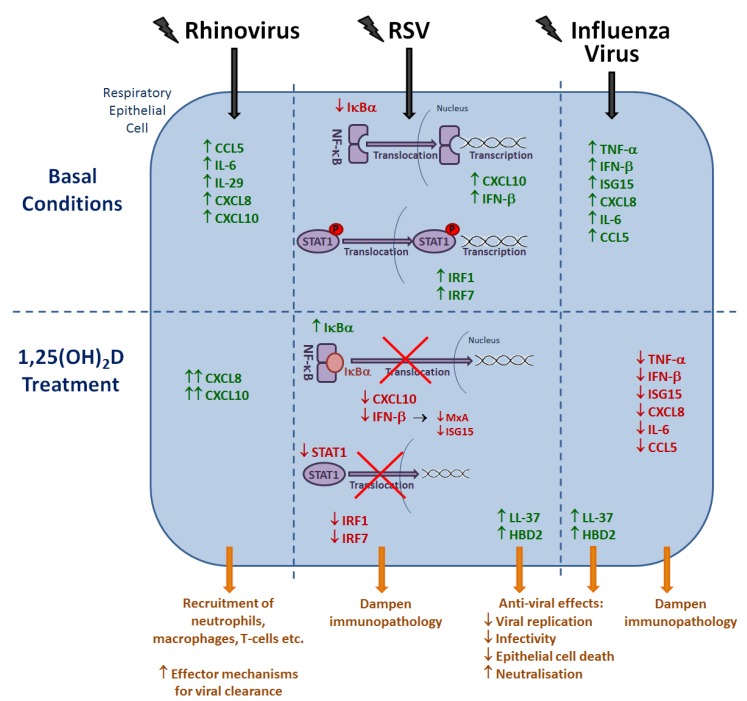Figure 4.
The immunomodulatory actions of 1,25(OH)2D against respiratory viruses. Rhinovirus infection of epithelial cells results in increased production and secretion of pro-inflammatory cytokines and chemokines, with the secretion of CXCL8 and CXCL10 further enhanced following treatment with 1,25(OH)2D. During RSV infection, IκBα expression is reduced, resulting in increased transcription of NF-κB-driven genes. STAT1 is also phosphorylated and able to translocate into the nucleus resulting in increased expression of IRF1 and IRF7. Pre-treatment with 1,25(OH)2D increases IκBα expression and decreases STAT1 phosphorylation, resulting in decreased production of CXCL10, IFN-β, MxA, ISG15, IRF1 and IRF7. Similarly, influenza A infection causes increased expression of pro-inflammatory cytokines and chemokines, with 1,25(OH)2D treatment causing decreased expression of TNF-α, IFN-β, ISG15, CXCL8, IL-6 and CCL5. Finally, 1,25(OH)2D is also able to increase LL-37 and HBD2 production, which have been shown to have antiviral effects against both RSV and influenza.

